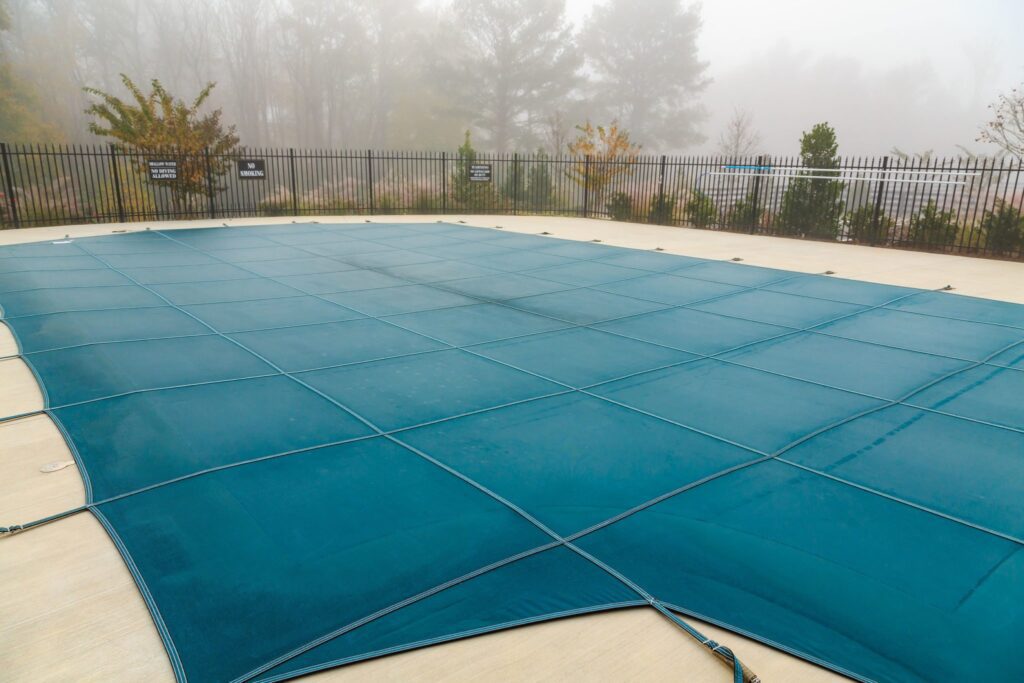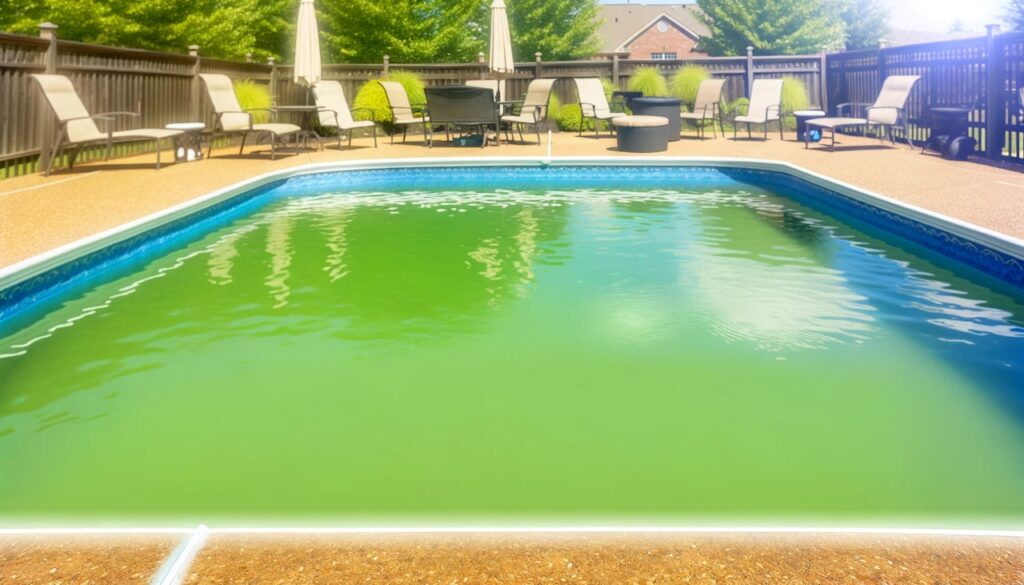As the winter months approach, protecting your above-ground pool becomes essential to ensure it remains in top shape for next season. Harsh winter weather can take a toll on pool covers, from heavy snowfalls to freezing temperatures and strong winds. Improperly securing your pool cover can lead to damage not only to the cover itself but also to the pool.
If you’ve invested in a pool design, it’s especially important to properly winterize it. Fortunately, there are several ways to ensure your pool stays protected through the colder months. Here are 5 essential tips for winterizing your above-ground pool.
5 Must-Know Tips to Cover Pool in the Winter
1. Use Air Pillows to Prevent Ice Damage
When it comes to winterizing your pool, one of the most crucial tasks is protecting the pool walls from the weight of ice. As water freezes, it expands by about 9%, and this pressure can cause cracks or even structural damage to the pool. The key to preventing this is using air pillows.
Air pillows are inflatable devices that create space between the ice and the pool’s surface, which helps absorb the expansion of the ice. By placing them in the center of your pool, you can effectively prevent a solid sheet of ice from forming over the entire surface of the water. This simple step helps protect your pool walls from ice-related damage, ensuring that the integrity of your pool remains intact.
Pro Tip: To inflate the air pillows quickly and easily, use a Shop Vac. This can save you a lot of time compared to manually inflating them. You’ll need enough air pillows to cover about 10% of your pool’s surface area. The more pillows you use, the better the protection.
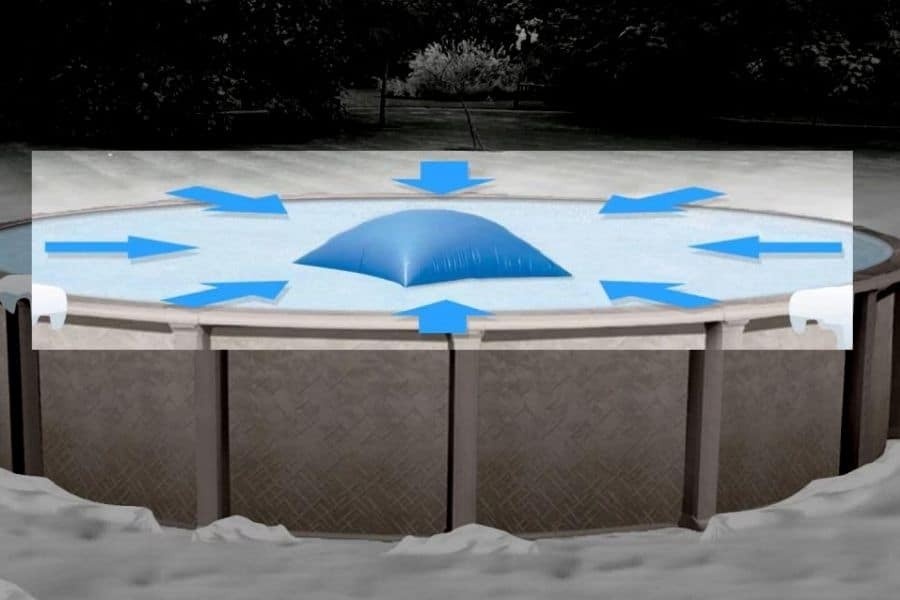
2. Secure the Cover Against Strong Winds
Wind is a pool cover’s biggest enemy, especially for above ground pools. Once wind gets underneath the edges of the cover, it can cause the cover to flap or even tear. In addition to the damage to the cover, it could allow debris, leaves, and snow to get into your pool.
To avoid this, you must ensure that your pool cover is securely fastened. Start by tightening the cable winch attached to your cover. This helps pull the cover tightly over the pool to prevent it from shifting. While a cable winch is effective, it may not be sufficient in areas with particularly strong winds.
For high winds, consider using wall bags. These bags are filled with water or sand and are placed along the edge of the cover to weigh it down, preventing the wind from lifting it. You can also use cover clips designed to keep the cover taut and minimize slack.
For extra wind protection, a spider winter cover saver is a great investment. This system features multiple bungee cords connected to a central hub, keeping both the cover and air pillows in place. The added tension helps ensure the cover remains tightly secured, even during heavy windstorms.

3. Maintain Proper Water Levels to Avoid Stress on the Cover
While it’s important to keep your pool covered, it’s just as important to monitor the water levels beneath the cover. If the water level drops too much, the cover can become too loose, which puts it at risk for damage. If the water level drops excessively, it could also put stress on the pool’s structure.
Before closing your pool for winter, check the water level. If it’s too low, add water back to the pool. A good rule of thumb is to ensure the water level is at least one inch below the skimmer. This will provide enough tension to keep the cover tight, but without putting undue stress on it.
It’s also essential to maintain a proper water level on top of the cover during winter. A small amount of rainwater (1/4 to 1/2 inch) on top of the cover is acceptable. However, if the rainwater builds up or snow melts, the weight of the water could cause the cover to sag or tear.
To keep the water level in check, use a pool cover pump to remove excess water. There are automatic pumps that will work continuously, or you can opt for a manual pump. When using a pump, be mindful of where you position it. Avoid placing it near any holes or rips in the cover, as it could cause the pool’s water to leak out.

4. Keep the Cover Free from Leaves and Debris
Over the fall and winter months, trees shed leaves, pine needles, and branches, which can quickly accumulate on your pool cover. This organic debris can be a major hassle to remove and, if left unchecked, can lead to algae growth, staining, and even damage to the cover. That’s why it’s essential to regularly remove leaves and debris from your pool cover.
The best way to remove debris is with a pool leaf rake. Unlike skimmer nets, which can be cumbersome and ineffective, a pool leaf rake makes it easier to scoop up leaves and debris without damaging the cover. This tool allows you to efficiently remove debris, which helps prevent mold, algae, and other issues.
If your pool is located near large trees, it’s a good idea to use a leaf net over your pool cover when closing it for the winter. These nets catch falling leaves and prevent them from accumulating on your cover. Once the trees have shed their leaves, you can remove the leaf net, leaving your pool cover clear and safe.
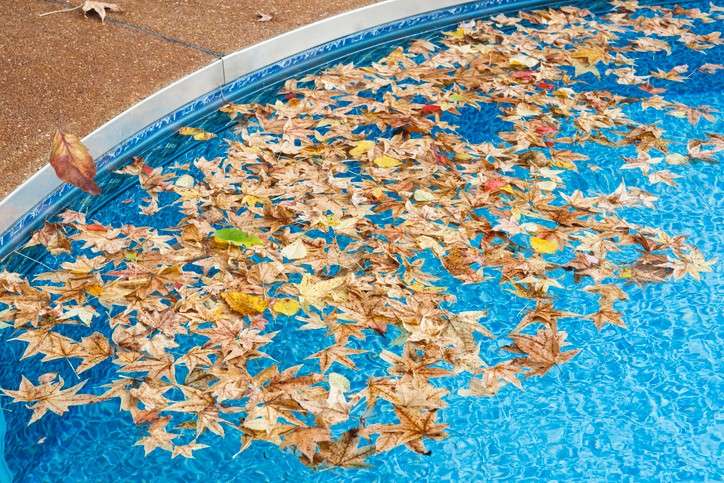
5. Check the Pool Cover Periodically
While it’s easy to “set and forget” your pool during the winter months, this approach can lead to unexpected issues. Instead of neglecting your pool cover after installation, you should periodically inspect it to ensure it’s still properly secured and free of debris.
Even if your cover seems to be working well, a lot can change during the winter. Snowfall, rain, and high winds can affect your pool cover over time. Every few weeks, check in on the cover to see if it has shifted or loosened, and tighten any loose sections. You should also readjust the air pillows and remove any accumulated water or debris. The more attention you give your pool cover, the longer it will last and the better protection it will provide.
Pro Tip: A quick check only takes a few minutes, and the time you invest will save you from costly damage. It’s far easier to spot and resolve small issues early than to deal with a cover disaster in the middle of winter.
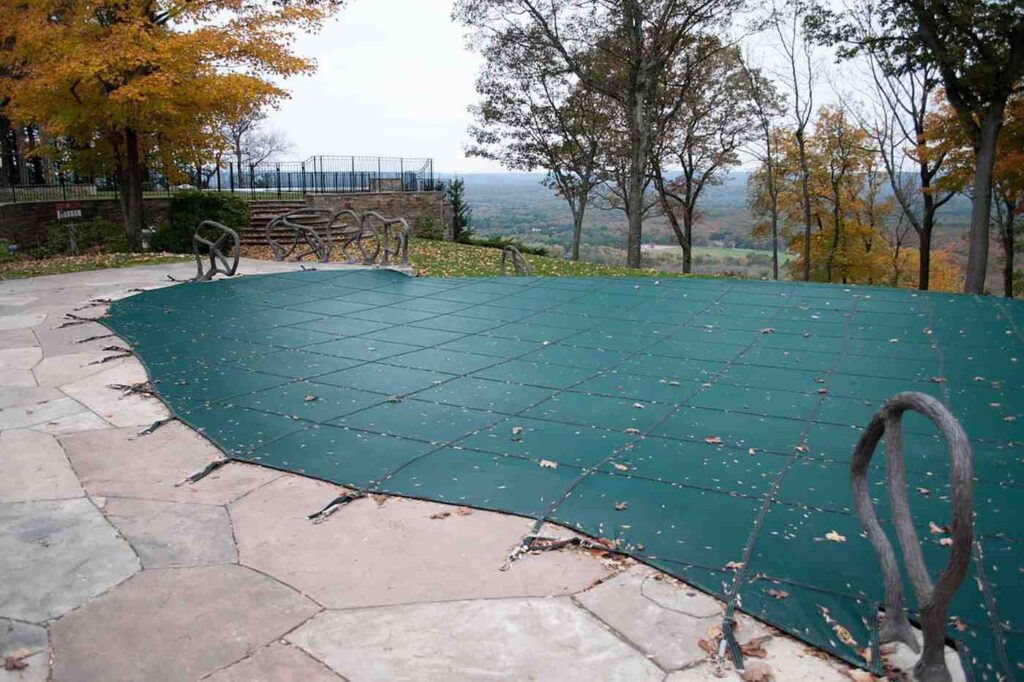
Conclusion
Winterizing your above ground pool might seem like a lot of work, but it’s an investment that will pay off by protecting your pool and your cover. By following these five tips—using air pillows, securing the cover against wind, maintaining water levels, removing debris, and periodically checking the cover—you can ensure your pool stays safe during the colder months.
A properly winterized pool is an investment that will save you time, effort, and money in the spring. So, take the time to do it right! Choose a high-quality winter cover, use the right accessories, and keep your pool in excellent shape. You’ll thank yourself when spring arrives and your pool is ready for the new season.
For a hassle-free experience, Cutters Pools offers easy financing options, making it affordable to get your pool winter-ready.
